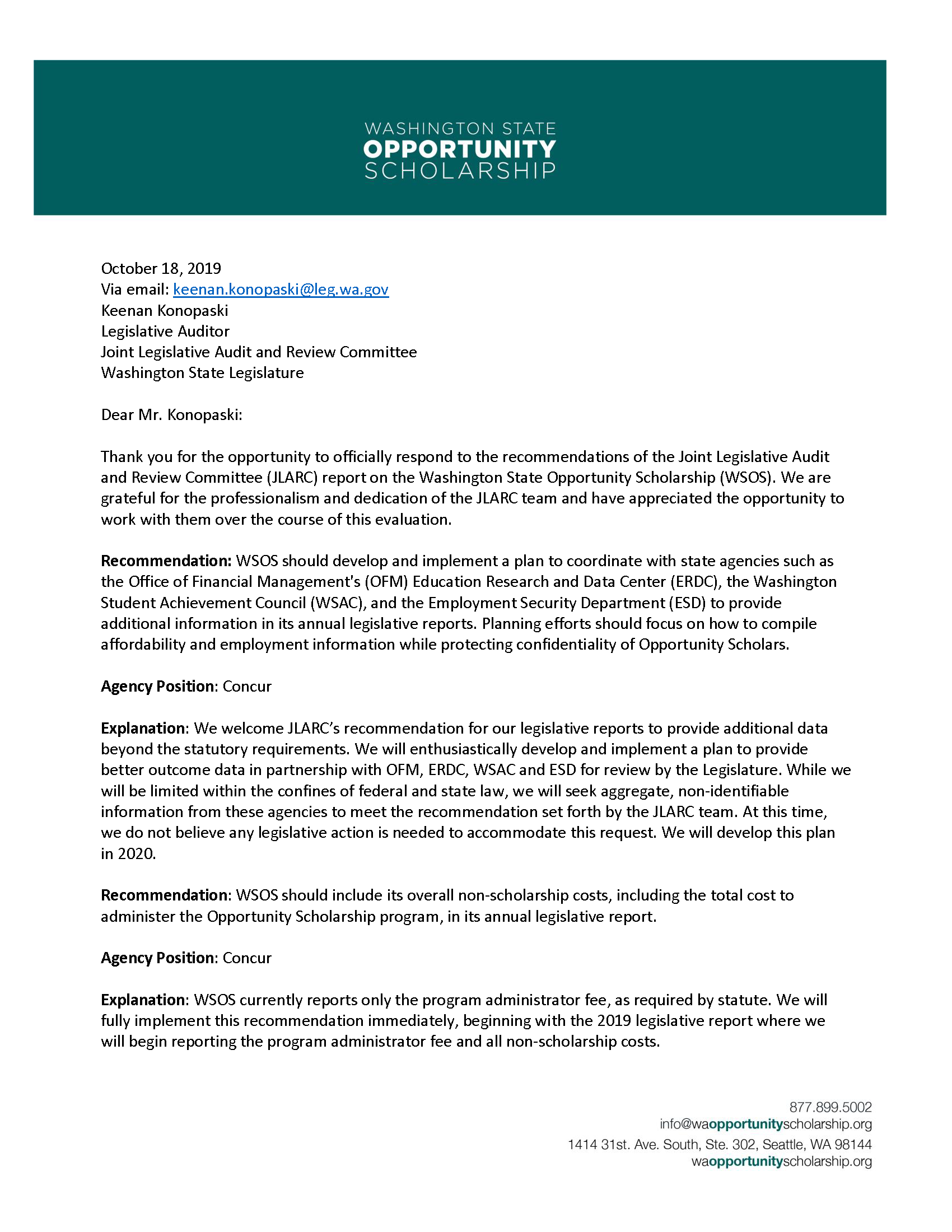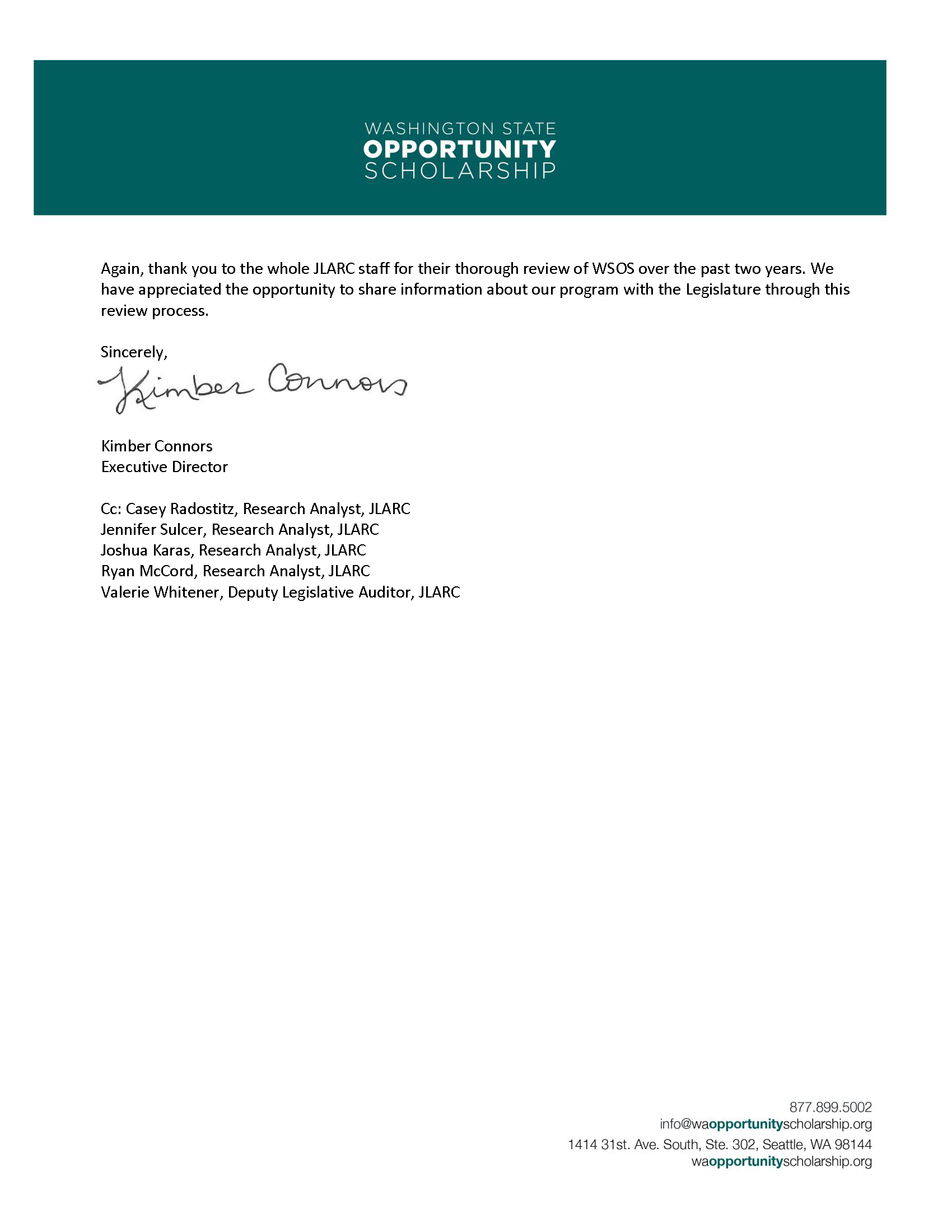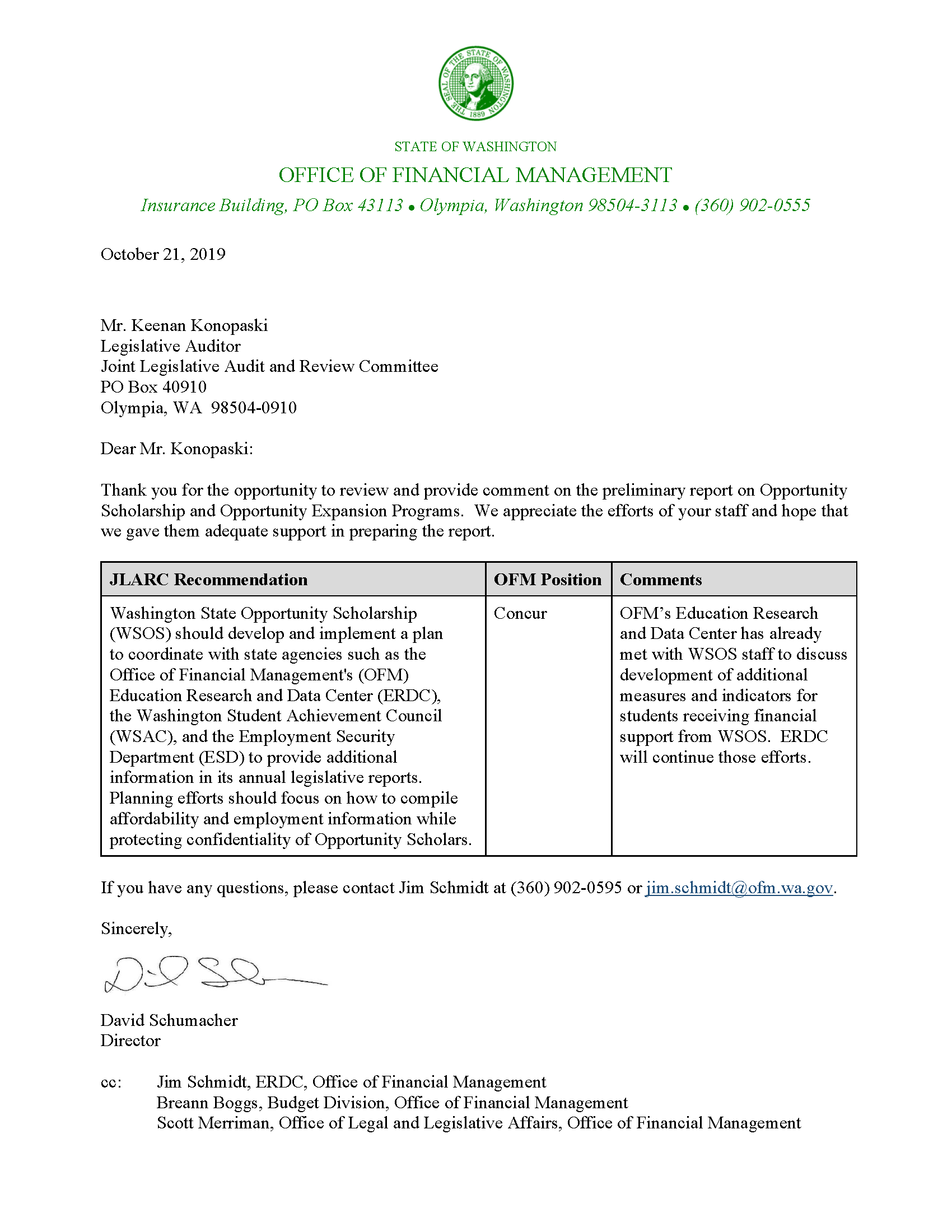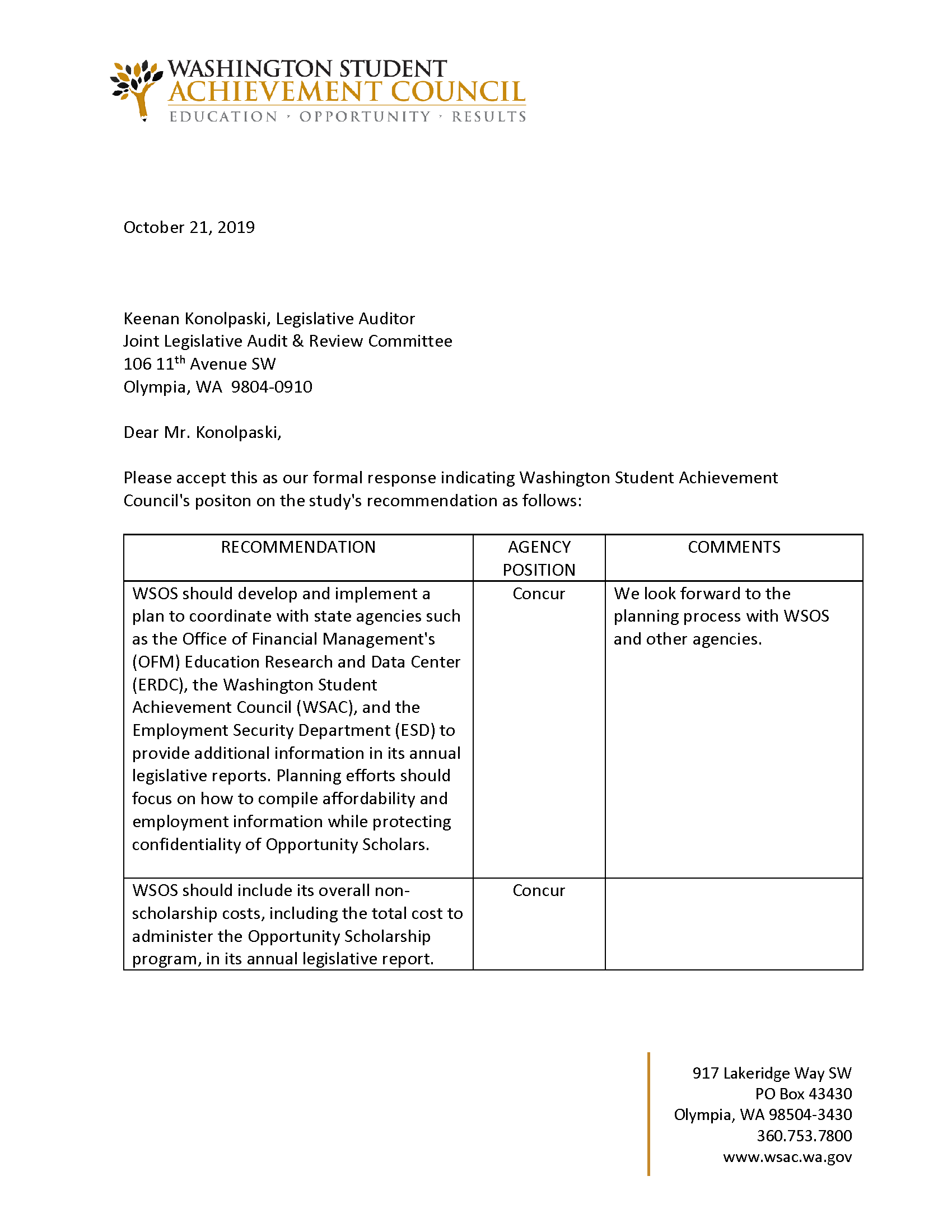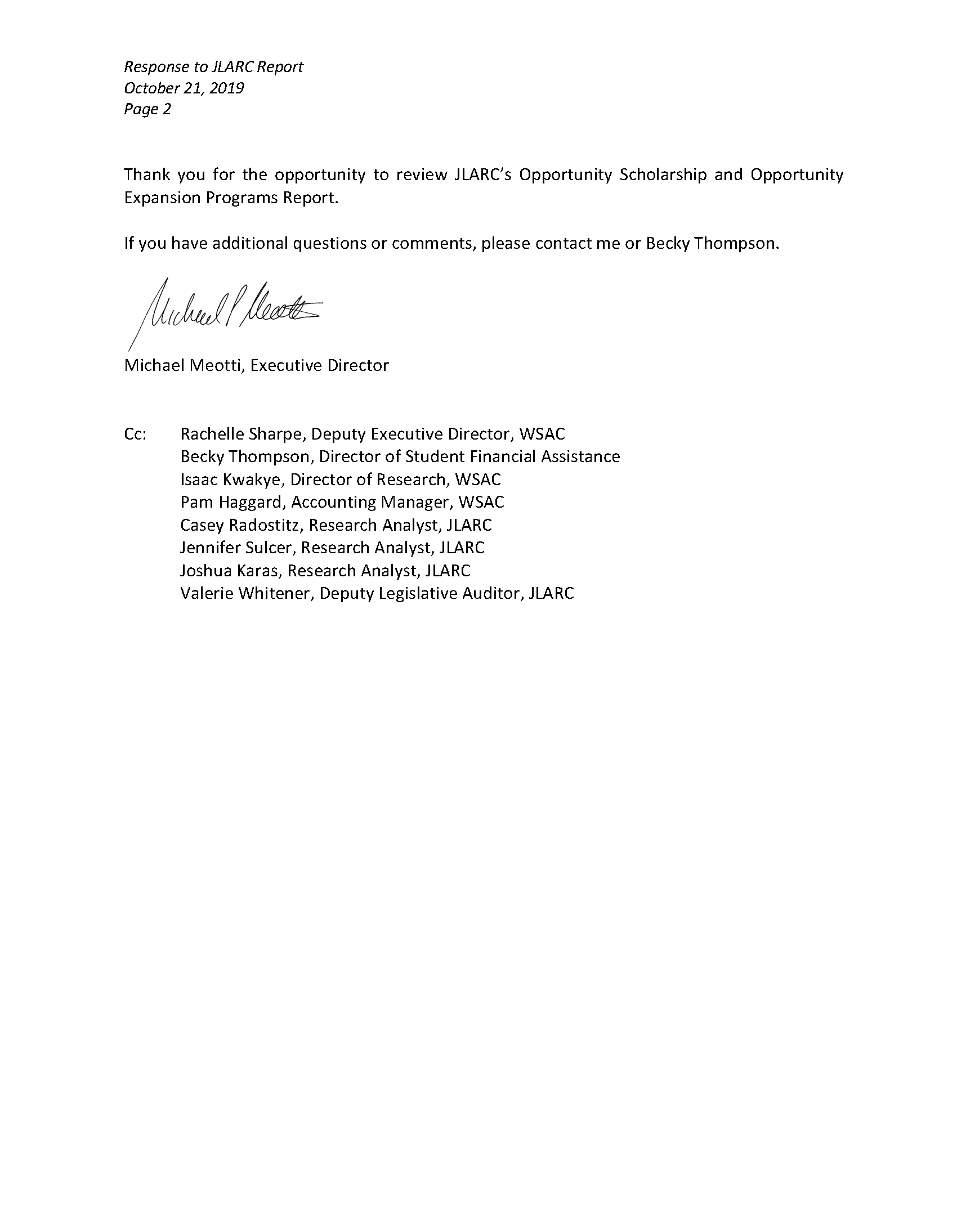The Opportunity Scholarship Act created the Washington State Opportunity Scholarship (WSOS) in 2011. WSOS provides scholarships to low- and middle-income students who pursue bachelor's degrees in high-demand science, technology, engineering, mathematics (STEM), and health care fields. The legislation also directed a JLARC review (ESHB 2088).
WSOS complies with statute and provides scholarships to students pursuing a high-demand STEM or health care degree
WSOS has provided more than 21,000 scholarships to over 10,000 low- and middle-income Washington residents between academic years 2012-13 and 2018-19. Scholars must pursue a bachelor's degree in a high-demand STEM or health care field. WSOS is funded through private contributions and state matching funds. In total, WSOS has received $175 million in private contributions and state matching funds since fiscal year 2012.
WSOS has spent $64 million on Opportunity Scholarships and $14 million on non-scholarship costs since fiscal year 2013. Per statute, WSOS reports the amount it pays to its nonprofit program administrator each year. This payment amount only reflects a portion of the total non-scholarship expenditures.
Opportunity Scholars have lower out of pocket costs and fewer student loans than their peers
The Legislature created the Opportunity Scholarship to help make college more affordable. There is no single definition of college affordability. Whether college is affordable or unaffordable is ultimately a policy decision.
To assist with that decision, JLARC staff identified several key affordability metrics that can be used to compare Opportunity Scholars to their peers (students who met WSOS eligibility requirements, and did not receive a scholarship). These include:
- Out of pocket costsCost of attendance not covered by grants and scholarships. (net price of college).
- Percentage of students borrowing money through loans, and borrowers' annual loan amounts.
- Unmet need (cost of college not covered by grants, scholarships, and family contributionsExpected family contribution is determined by a federal methodology based on information reported on student financial aid applications, such as income and number of household members attending college.).
In comparison to their peers, Opportunity Scholars have lower out of pocket costs, student loans, and unmet need. For example, Opportunity Scholars pay an average of $11,000 out of pocket each year while their peers pay an average of over $13,000.
Opportunity Scholars are more likely to continue their education than their peers. Early recipients have graduated with degrees in high-demand fields.
One of WSOS's objectives is to increase the number of degrees earned in high-demand STEM and health care fields. While some Opportunity Scholars have graduated, many are still pursuing a degree and more time is needed to identify their outcomes. To date, eighty-four percent of those graduating earned a degree in a high-demand field. Scholars who have not yet graduated are more likely to continue their education than their peers.
WSOS can improve its legislative reporting with student financial aid and employment data collected by state agencies
WSOS issues annual reports to the Legislature that include the information required by statute. These reports do not assess whether WSOS meets the legislative intent to help make college more affordable or help Scholars enter middle-income jobs. The reports provide limited information about Opportunity Scholars' employment and earnings. WSOS does not currently have access to state financial aid and employment information that would improve legislative reporting in the future.
The Opportunity Expansion Program funded three university STEM programs. All have secured funding for the future.
The Opportunity Expansion Program received $6 million through a state Research & Development (R&D) tax credit before the credit expired in 2015. The WSOS Board awarded a total of three Opportunity Expansion Program grants to Central Washington University, Western Washington University, and the University of Washington. These grants focused on capacity building and expansion in STEM-related teacher education, computer science, and engineering. All three grant recipients have secured future funding for these STEM programs. It is too soon to evaluate how these grants impact student outcomes (e.g. graduation, employment, earnings).
Legislative Auditor Recommendations
The Legislative Auditor makes two recommendations to improve legislative reporting.
- WSOS should develop and implement a plan to coordinate with state agencies such as the Office of Financial Management's Education Research and Data Center, the Washington Student Achievement Council, and the Employment Security Department to provide additional information in its annual legislative reports. Planning efforts should focus on how to compile, protect confidentiality, and include financial aid and employment data on Opportunity Scholars. WSOS should include updates on its plan implementation and any additional metrics in its annual legislative reports.
- WSOS should include its overall non-scholarship costs, including the total cost to administer the Opportunity Scholarship program, in its annual legislative report.
WSOS, the Office of Financial Management, and the Washington Student Achievement Council concur with these recommendations. You can find additional information on the Recommendations tab.
Committee Action to Distribute Report
On December 4, 2019 this report was approved for distribution by the Joint Legislative Audit and Review Committee.
Action to distribute this report does not imply the Committee agrees or disagrees with the Legislative Auditor recommendations.












